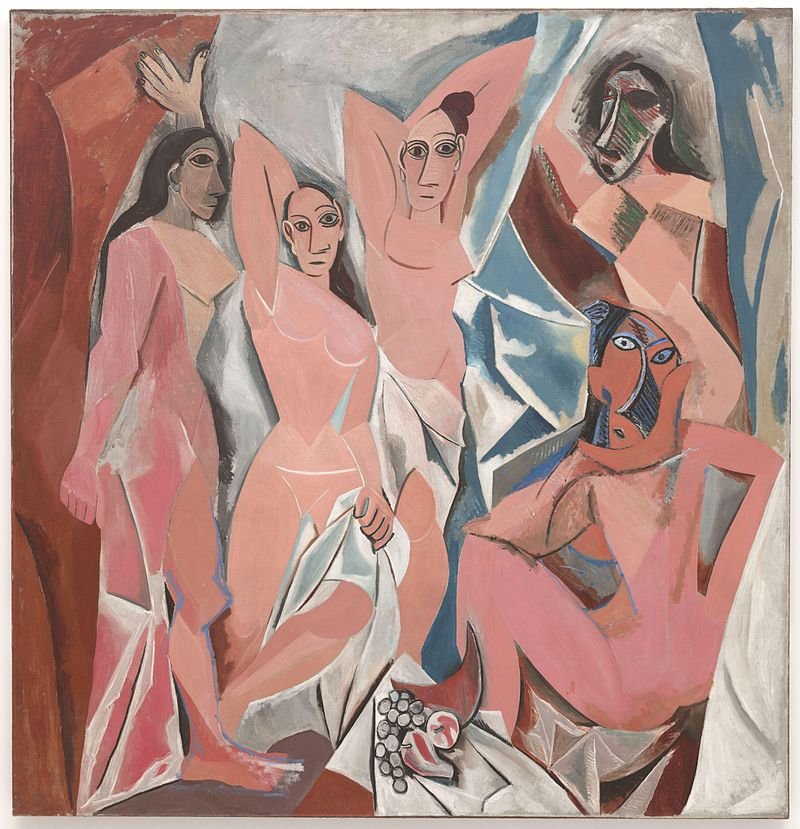Description
Drawing from tribal primitivism while eschewing central dictates of Renaissance perspective and verisimilitude for a compressed picture plane using a Baroque composition while employing Velazquez’s confrontational approach seen in Las Meninas, Picasso sought to take the lead of the avant-garde from Henri Matisse. John Richardson said Demoiselles made Picasso the most pivotal artist in Western painting since Giotto and laid a path forward for Picasso and Georges Braque to follow in their joint development of cubism, the effects of which on modern art were profound and unsurpassed in the 20th century.
Les Demoiselles was revolutionary, controversial and led to widespread anger and disagreement, even amongst the painter’s closest associates and friends. Henri Matisse considered the work something of a bad joke yet indirectly reacted to it in his 1908 Bathers with a Turtle. Georges Braque too initially disliked the painting yet studied the work in great detail. His subsequent friendship and collaboration with Picasso led to the cubist revolution. Its resemblance to Cézanne’s The Bathers, Paul Gauguin’s statue Oviri and El Greco’s Opening of the Fifth Seal has been widely discussed by later critics.
At the time of its first exhibition in 1916, the painting was deemed immoral. Painted in Picasso’s studio in the Bateau-Lavoir in Montmartre, Paris, it was seen publicly for the first time at the Salon d’Antin in July 1916, at an exhibition organized by the poet André Salmon. It was at this exhibition that Salmon, who had previously titled the painting in 1912 Le bordel philosophique, renamed it to its current, less scandalous title, Les Demoiselles d’Avignon, instead of the title originally chosen by Picasso, Le Bordel d’Avignon. Picasso, who always referred to it as mon bordel (“my brothel”), or Le Bordel d’Avignon, never liked Salmon’s title and would have instead preferred the bowdlerization Las chicas de Avignon (“The Girls of Avignon”).





